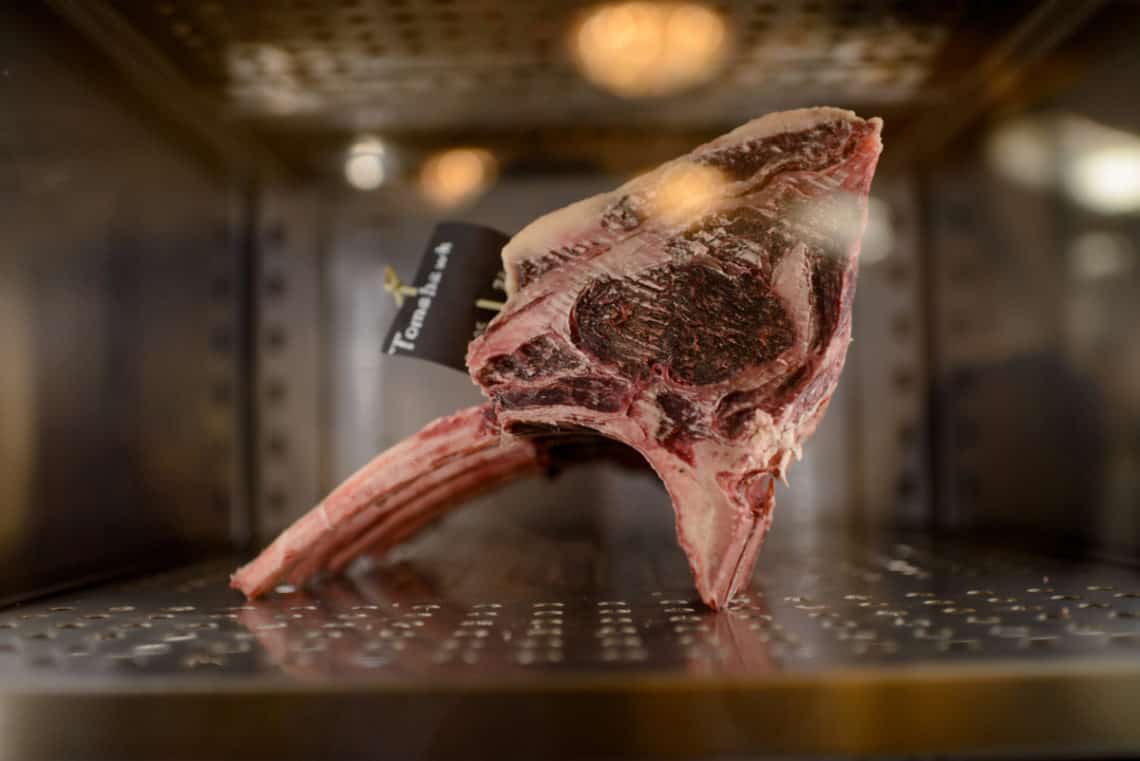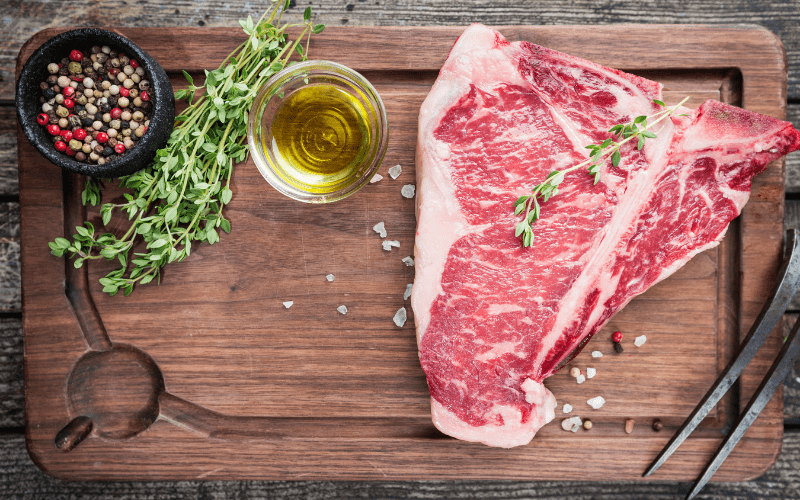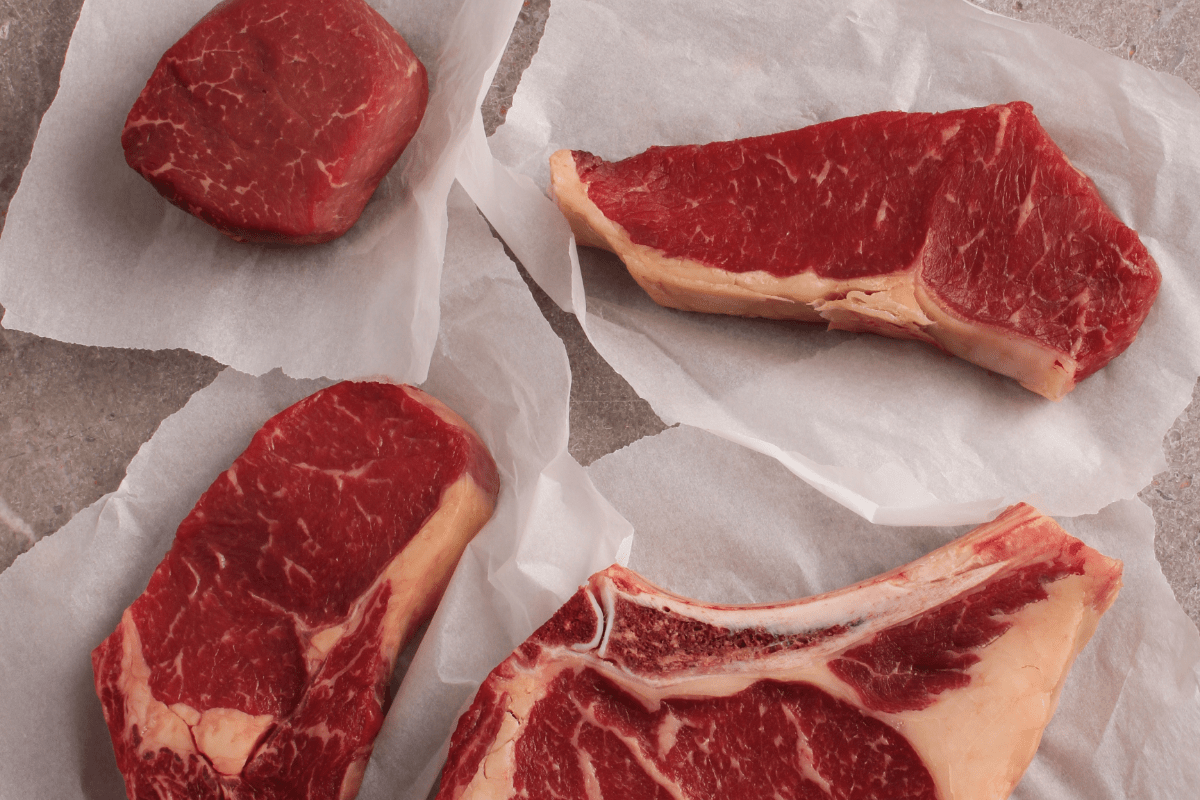Almost everywhere you look now when you are considering buying beef, whether it be at the meat market, supermarket or even at a steak house, you will see the beef being referred to as “aged”, “wet aged” or “dry aged.
So what does wet aged and dry aged beef actually mean? When beef is “aged”, it essentially refers to the length of time that the meat has been left to mature such as 14, 21, 45 days etc. “Wet” aged beef refers to beef that has been left to age in a vacuum sealed pouch within it’s own blood, and “Dry” aged means it has been left to air dry in a temperature and moisture controlled environment.
We will now explain further how these different ageing techniques affect the meat, and what to expect if you choose to eat them.
What Does it Mean to Age Beef?
The term “Aging” also referred to as “hanging”, simply describes how long the beef is kept after slaughter before being sold or eaten.
If a side of beef has been aging for 21 days, it means that the beef has been in a chiller for that amount of time to allow the meat to become more tender and flavorful.
To put it in laymans terms, while the meat is “aging”, it is slowly starting to decompose, softening the tissue which makes the meat more tender.
There are different schools of thought as to how long to let meat “age”, but the usual lenght of time is 14 – 28 days.
Less than 14 days and the meat will not have had sufficient time to make much impact on the breaking down.
Over 28 days and the beef taste will become stronger, and in the case of dry aging, the amount of spoiled unusable meat that will need to be trimmed, will push up the cost of the saleable beef.
Wet Aged Beef
As mentioned in the opening, wet aged beef is when the meat is placed in a vacuum sealed airtight pouch and left for an amount of time before being eaten.
Wet aged beef is more popular with supermarkets, lower priced restaurants, and other food outlets that need to keep their costs low. Now this isn’t meant as a negative thing, or to mean that wet aged beef is not good, it just means that you get less weight loss with wet aged steaks, which helps the with costings and profits.
Also wet aging allows for much smaller cuts of meat, such as individual portion cut steaks, to be aged due to the fact that nothing needs to be trimmed off of the meat once it is opened and ready to be used.
Many restaurants prefer the ease of wet aged steaks as it allows them to carry stock without the worry of it spoiling. They can order a quantity of individually vacuum packed steaks, cut to any portion size they require, and when they come to use it a week or two later, that steak will still be at the weight it was when it was sealed.
Other factors that make wet aged steaks popular with food outlets is that they take up much less space, and can be stored in a normal refrigerator.
Supermarkets favor the wet aging process also due to the lack of waste. They can have a carcass butchered, portion cut and packed before it has had time to lose much weight or moisture, and therefore make more money from the animal.
As will become clear when we discuss dry aging, there is a much higher cost eliment to doing dry aging over wet, and supermarkets need to keep costs down to attract customers into thier stores.
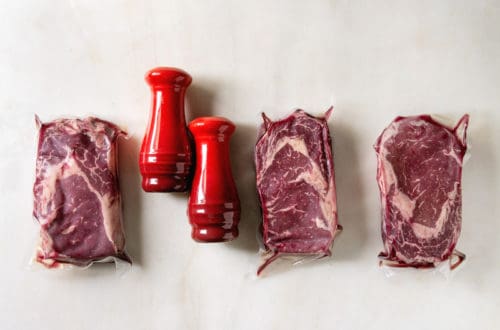
Dry Aged Beef
Dry aging beef is a little more complex than just cutting a steak and sealing it in a vaccuum pouch.
To “properly” dry age, the meat needs to be kept in a temperature and moisture controlled environment. Here it is left exposed to the air to allow the natural moisture to leave the meat and intensify the flavor.
Meat that is being dry aged is often left on the bone, and the size needs to be much bigger to accomodate the dead trim that will need to be removed after the aging process.
Many years ago, aging would just have been done in the normal walk in chiller, however there are now dedicated Dry Aging chillers that can be seen in more upmarket butchers shops.
With the increase in popularity, these dry age meat cases now display a variety of cuts of meat that are at various stages of aging, and the customer than choose to have cuts taken from the piece of meat that they prefer.
Some boutique butchers and steak houses will age beef for as long as 120 days. However it is only the true die hard food connoisseurs that will likely try eating meat of that age (and be willing to pay the hefty price).
The longer the butcher keeps aging the beef, the deeper the spoiled meat will work its way into the carcass. This spoilage is the dark, dried and sometimes fuzzy (mold) exterior seen on the aged beef, and obviously cannot be eaten and has to be disposed of.
Beef that is aged 14 – 21 days will have approximately 10-15% worth of weight loss and trim. In the case of 120 day aged beef, the weight loss and trimming could be as high as 50%, and the cost of that will now have to be added to the saleable cut.
Whereas a 14 day aged steak may cost you $20, the same weight steak cut from beef aged 120 days could see you paying $50.
If you think you would like to try a cut of beef that has been aged for a longer than normal length of time, you can sometimes find a butcher who will hang the meat for you.
You will find that the butcher will cut the meat fresh for you and you will be expected to pay for the meat there and then. They will then keep it in their chiller with your name on it for the length of time you request, say 100 days. You would then turn up 100 days later and they would trim and cut the meat in front of you as per your requiremements.
One vital thing to remember is that the longer you wish to have it aged, the larger the piece of beef needs to be to allow for spoilage and trim.
If you bought a 10lb rib roast for $120, you may find that that has shrunk to 3lb useable meat after 100 days worth of dead trim has been removed. That means your cost of $12 per lb when bought fresh, has risen to $40 per lb after aging, and the piece of meat that would originally have served 15 people will now serve 6!
You can now see why supermarkets and restaurants prefer to use wet aged beef with no wastage.
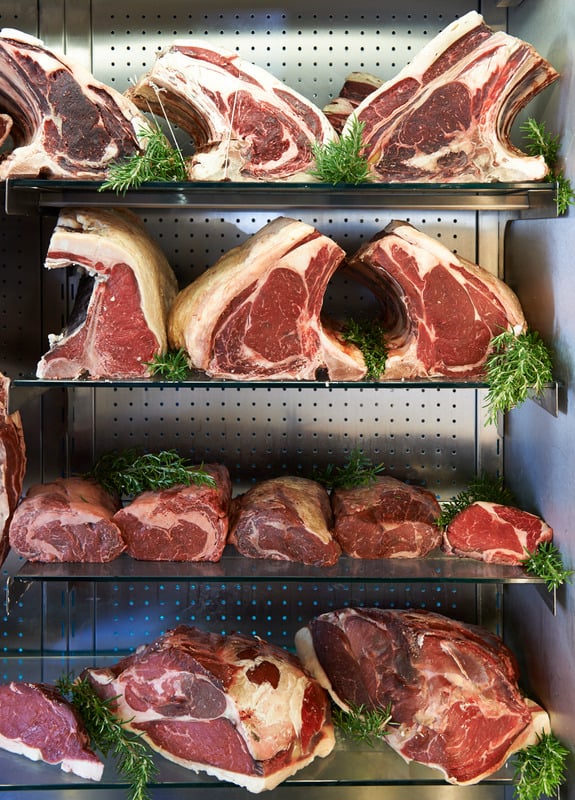
So Which is Best – Wet or Dry?
Quite simply it comes down to personal preference.
Wet aged steaks can have a slight metalic flavor to them due to being sealed in a bag with their own blood.
This is by no means a bad flavor as anyone who has eaten steak in a restaurant or from the supermarket has likely eaten wet aged steak.
In fact most of the beef sold in supermarkets is wet aged, and the amount sold each day across America would make you think that it’s a taste we are familair with and accept as normal.
Dry aged beef will have a much stronger ‘beefier’ flavor that will continue to intensify the longer it is aged.
Again, if you have eaten at a decent steak house or bought your steak from an independent butcher, you will probably have had 14 – 21 day aged steak.
As mentioned earlier, it is really only the foodie type that will want to go for the longer aged meat, and this can end up having a more potent game type taste and heading towards that of a bleu cheese.
Here is a story written in the Guardian newspaper that talks about how some people are doing extreme aging of steak to satisfy an ever growing fascination for longer dry aged beef, and research the different tastes it produces.
All we can say is that if you have an interest in trying different aged beef and steaks, find yourself a reputable supplier such as an independent butcher and begin experimenting with the different age processes to find out which age suits your style of flavor.
Who knows, maybe one day it will be you ordering the 459 day aged steak!!!

